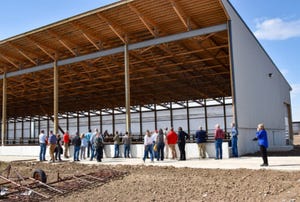Digging into the December Hogs and Pigs report
If farrowing intentions are correct and pigs per litter continue, winter and spring pig crops are likely to be larger than a year earlier.

It looks like Santa gave pork producers a lump of coal in the form of the December Hogs and Pigs report. It was not an encouraging report. All categories save one were higher than the average of pre-release trade predictions.
USDA’s December hog inventory survey found 0.5% more hogs than the pre-release trade forecast expected. Farrowings are also higher than trade experts predicted. The one category lower than trade expectations was the breeding herd. It is 2 percentage points smaller than the average of the pre-release trade forecasts.
The breeding herd is under 6 million head for the first time since June 2016. That sounds encouraging until one considers that the breeding herd is down 3.3%, but farrowing intentions are down less than 2%.
Plain
Revisions
USDA increased the pig crop for March-May 2023 by 1.4% and increased the June-August pig crop by 1.1% to bring hog numbers in line with 2023 hog slaughter. They increased the number of sows farrowed during March-May and June-August to keep sows farrowed in line with the pig crop. Daily hog slaughter during September-November was up 2.0% year-over-year. The market hog inventory in the September Hogs and Pigs report implied that September-November hog slaughter would be up 0.6%.
The heavy weight group in the December report implied December hog slaughter will be up 2.4%. Since the start of December hog slaughter has been up 6.0%. On a daily basis hog slaughter has been up even more. The large increase is due in part to when Christmas falls. Because the Christmas holiday fell on Monday this year and was on Sunday last year, it is difficult to make a fair year-to-year comparison of daily hog slaughter. Over the last three weeks hog slaughter was up 3.4%, 3.9%, and 36%.
The market hog inventory weight groups indicate hog slaughter will decline relative to last year as we move through winter and spring. If the market hog weight groups in the December report are correct then daily hog slaughter during December should be (roughly) up 2.4%, January slaughter up 1.3%, February slaughter up 0.5% and March-May hog slaughter down 0.5%.
For the third consecutive quarter, pigs per litter were record high. Pigs per litter in March-May 2023 were a record 11.36 head, up 3.3% year-over-year. They were a record 11.61 in June-August up 4.3% from a year earlier. PPL was a record 11.66 in September-November up 3.9%. The rapid growth in pigs per litter is offsetting the decrease in the litters farrowed. These increases are quite large relative to previous history. During the preceding 12 quarters pigs per litter were up an average of 0.1%.
Plain
Sows farrowed during September-November was down 4%. The decline in sows farrowed is likely due to the red ink producers have been experiencing in recent months. Calculations by Iowa State University estimate that Iowa hog producers have lost an average of $21.66 per hog sold during the last 13 months. Historically, hog producers have responded to financial losses by reducing litter numbers. Producers have reduced the number of sows farrowing this year also, but it has been offset by big increases in pigs per litter.
Plain
There are several quick checks on the inventory numbers to see if they are consistent with each other.
Pig crop check #1: sows farrowed in September-November were down 4%, pigs per litter were up 3.9%. These numbers are consistent with a 0.2% smaller pig crop.
Pig crop check #2: the September-November pig crop was down 0.2% and the light weight market hog inventory was down 0.5%. That is not a real close match but imports of feeder/weaner pigs during September-November were up 3.6%. Adding pig imports to the pig crop it gives a light weight market hog inventory that is down 0.3%.
Market hog check: The >180 pound market hog inventory was up 2.4% on December 1. Hog slaughter since December 1 has been up 6%. These percentages are expected to draw closer together once we even out holiday slaughter.
Plain
Sows farrowed during the fall were down 4.0%. Farrowing intentions for winter (December-February) are down 1.8% and for spring (March-May) are down 1.2% year-over-year. If farrowing intentions are correct and pigs per litter continue its trend, then the winter and spring pig crops are likely to be large than a year earlier making summer and fall hog slaughter larger in 2024.
At this point, it looks like 2024 hog slaughter will be slightly larger than this year. Unless pork demand picks up, hog prices in the coming year could well be even to lower than this year.
Plain
About the Author(s)
You May Also Like





